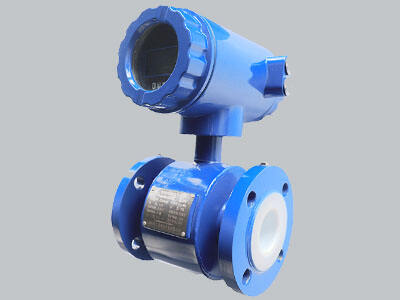Differential pressure transmitters, in particular, are fascinating devices that are used for the measurement of the difference of pressure between two locations. This can seem a bit confusing at first, but is a really important topic because it helps us understand how liquids or gases move under different circumstances. You may have heard of these tools which are the backbone of many industries, and they help keep the show running.
Principle of Operation of Differential Pressure Transmitters
Differential pressure transmitters are some of the best technologies available today to obtain highly precise and accurate measurements. So, we can be sure that the figures given by them are trustworthy when it comes to testing how viscous or gaseous fluids move. For instance in the factories where they produce chemicals, these flow transmitter are used to monitor for what is moving through pipes. Which is important because if this flow doesn't work out, things could break in production. Just as in places that produce food and beverage, differential pressure transmitters help measure how liquids and gases are utilized in the manufacturing of those products. It is critical to get these measurements correct, and this ensures that everything is safe and works perfectly.
Advantages of Differential Pressure Transmitter
When measuring liquid and gas flow, pressure differential transmitter have many benefits. A significant advantage is that these tools can indicate whether the flow rate is excessive, or insufficient. This is extremely helpful, because if it shows that the flow isn't at the right level, we can make changes to correct it. Too fast a flow could cause spills or leaks, for example; too slow, production delays. A key advantage is that a differential pressure transmitter can be used with a variety of environments, from high temperatures to high pressures. They all can have different purposes, not to forget that they are also being important for several industries.
Differential Pressure Transmitter Principle and Working + Applications
A differential pressure transmitter consists of several key components that work together to enable the measurement of the pressure difference between two distinct points. These components are known as the pressure sensor and differential pressure flow transmitter electronics. This is the piece that actually registers how much pressure difference there is. The information is then transformed through the transmitter electronics into a readable format. These transmitters work according to a scientific law known as Bernoulli's principle. This says that as pressure decreases, fluid velocity increases. By applying this concept, we are able to compare the pressure difference and translate it into a signal — one that the human brain can comprehend and act upon.
Uses of a Differential Pressure Transmitter: Measure Pressure, Level, and Flow
WEIBAO Differential pressure transmitters are highly versatile because they can be used to measure various parameters, such as pressure, level, and flow. These are very useful tools in pressure measurement and help us visualize the pressure difference between the two points and are very useful indicators of gases or liquids in a system. In level measurement, they can tell us how much liquid we have in tanks or other containers, this has a very important role in a lot of operations. In flow measurement, they help us determine how fast liquids and gases are flowing through pipes or other systems. This knowledge is essential for industries to operate in safety and efficiency.
Regular Calibration and Maintenance is Key
Regular calibration and maintenance are critical in ensuring the continued efficiency of differential pressure transmitters in generating accurate measurements. Calibration is checking to make sure that the instrument is reading correctly. If it’s not correct, we have the ability to make adjustments to make sure it’s correct. To ensure everything is on point, this calibration should happen at least annually. Maintenance is the process of cleaning the device and checking it on a regular basis to ensure that it is working well. With proper upkeep, these instruments can perform their functions for long enough to make a difference.
Differential pressure transmitters are extremely important tools that are used in a wide variety of industries as you can imagine. They help ensure accuracy in measuring how liquids and gases flow, so it is vital to many processes. They are flexible and can be used for numerous different purposes. Now the next time you come across a differential pressure transmitter, you will know how it works and why it is so important! All over the world there are businesses that may require a differential pressure transmitter. We ensure that your processes run smoothly and safely by designing and manufacturing our products to the toughest standards.
Table of Contents
- Principle of Operation of Differential Pressure Transmitters
- Advantages of Differential Pressure Transmitter
- Differential Pressure Transmitter Principle and Working + Applications
- Uses of a Differential Pressure Transmitter: Measure Pressure, Level, and Flow
- Regular Calibration and Maintenance is Key
 EN
EN
 AR
AR BG
BG HR
HR CS
CS DA
DA NL
NL FI
FI FR
FR DE
DE EL
EL HI
HI IT
IT KO
KO NO
NO PL
PL PT
PT RO
RO RU
RU ES
ES SV
SV CA
CA TL
TL ID
ID LT
LT SR
SR VI
VI HU
HU TH
TH TR
TR MS
MS GA
GA BE
BE MK
MK BN
BN LO
LO LA
LA MN
MN NE
NE MY
MY




